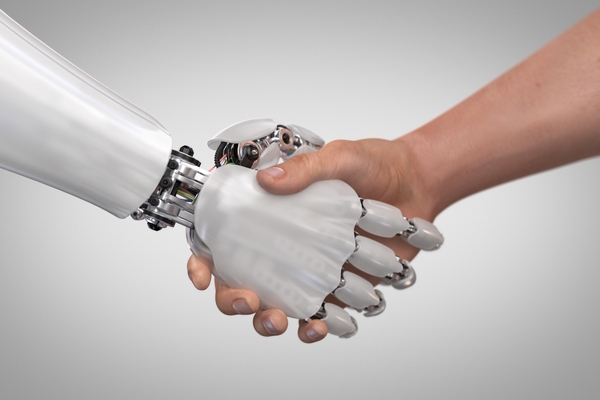Managing desk free workers

Paul Ridings at OneAdvanced asks: Is your organisation equipped to manage the ‘non-typical’ desk-free worker?
When discussing business technology, the conversation often focuses on solutions designed for desk-based employees. These digital tools, such as people management systems, are often created with the office worker in mind.
But what about the significant number of desk-free workers who don’t have access to a desk or a computer during their day-to-day tasks? These individuals work in locations like factories, warehouses, and on the road, and in sectors like retail, wholesale, distribution, logistics, and manufacturing. Despite being essential, many of these employees are excluded from process innovations that could improve their work experience.
Also referred to as frontline workers, these employees form the backbone of many industries and represent about 80% of the global workforce. Without them, many operations would come to a standstill. Productivity is often a top priority for businesses, and technology is a driver of increased output.
Yet, the desk-free workforce is frequently left out of technology conversations. Why is this, and why do these workers receive less recognition than their desk-based counterparts?
Roles for all and anyone
One reason for the lack of technological focus on desk-free workers is that they don’t spend their time in front of a computer, which makes implementing digital solutions more challenging.
Furthermore, there isn’t a single, defined persona for these workers. Desk-free roles attract a wide variety of individuals: young school leavers, students in part-time jobs, experienced professionals with families, as well as workers who are perhaps approaching retirement. Each desk-free persona comes with their own set of motivations, expectations, and needs.
To attract and retain these individuals, organisations must understand these varied motivations. For some, the job might be a way to support their education or as a stepping stone to a better position. For others, it’s a primary career. Understanding these differences is key to creating a work environment that retains desk-free talent and keeps them engaged.
A gap in understanding
While there isn’t a single type of person across these roles, there are several characteristics that unite this group. Many desk-free workers prioritise basic needs like being paid accurately and on time, experiencing less stress from irregular shift patterns, and having clear company communication. They also want recognition for their work and opportunities for training and advancement that can lead to promotions and higher wages.
However, many employers don’t fully understand these needs. High-level leaders often assume that desk-free workers are only interested in short-term jobs and don’t see the need to offer career progression opportunities. As a result, the focus shifts toward desk-based employees, with leaders investing more in their engagement and retention.
This gap in understanding has tangible consequences. High attrition rates among frontline workers lead to increased recruitment costs, productivity loss, and weakened relationships with customers and suppliers. People in customer-facing roles are the “face” of the business, and frequent staff changes make it difficult to build long-term relationships. Brand image can also suffer as customers and partners may perceive the company as unreliable due to high staff turnover.
Effective digital solutions
Despite these challenges, effective digital tools can help manage and communicate with desk-free workers. Using mobile devices such as smartphones and tablets, organisations can ensure that these workers are updated on changes to shifts or tasks, providing flexibility and boosting morale. These tools also allow workers to easily communicate back, provide feedback, and engage in two-way conversations.
The diversity within the desk-free workforce underscores the importance of clear and consistent communication between employees and managers. A digital employee portal, for instance, ensures that everyone, regardless of their shift schedule, has access to the same information. Implementing digital performance and talent management software allows employers to gain valuable insights into each worker’s potential and individual needs. This, in turn, leads to higher engagement and productivity.
It’s important to address this disparity. If desk-free workers know that desk-based colleagues are better supported with technology, this will likely harm engagement levels. In fact, 75% of frontline workers feel there is room for improvement in the technology they currently have to perform their jobs effectively.
The right IT for easy wins
One of the biggest issues desk-free workers face is accurate and timely payment. Implementing time and attendance software can ensure that workers are properly compensated for their hours while preventing understaffing issues that arise from unfilled shifts. Payroll technology can streamline these processes too, giving workers confidence that they will be paid for every minute worked.
In addition, some businesses are adopting solutions that allow workers to access their pay when they need it most, whether that’s on the day of the shift or at the most convenient point in the payroll cycle. This helps desk-free workers, many of whom are lower-paid, to manage their personal cash flow better, reducing financial stress and increasing their sense of value within the company.
Equally important is offering progression opportunities to these employees. Many of these workers are eager to advance in their careers but feel overlooked. By providing training and development programmes, organisations can show that they value all employees equally and are giving frontline workers a chance to learn new skills, achieve higher pay, and ultimately feel more satisfied within their roles.
Finally, new technologies such as Generative AI are already revolutionising learning and development programmes for desk-based employees, and there is potential to extend these benefits to desk-free workers. GenAI can create personalised learning journeys based on each worker’s skills, knowledge gaps, and preferred learning styles. This technology enables workers to progress at their own pace, ensuring they get the most out of their training. By offering tailored development, employers can help all workers fulfil their potential, boosting their productivity and overall job satisfaction.
Success for all
In today’s competitive market, even small wins can have a significant impact. Taking a fresh approach to managing desk-free workers, focusing on providing the right technological support, can improve engagement, job satisfaction, and retention. Reducing staff turnover lowers recruitment costs and ensures that experienced workers stay, helping to maintain high levels of productivity, profitability, and customer outcomes.
Happier desk-free workers are also more likely to become positive ambassadors for the brand, fostering a supportive work environment for new hires. Despite their diverse roles, many of the challenges these workers face can be addressed through digital tools. Technology empowers them to perform their best work, ultimately driving greater overall business success.
Paul Ridings is Global Director of Growth for People at OneAdvanced
Main image courtesy of iStockPhoto.com and Tempura

Business Reporter Team
Related Articles
Most Viewed
Winston House, 3rd Floor, Units 306-309, 2-4 Dollis Park, London, N3 1HF
23-29 Hendon Lane, London, N3 1RT
020 8349 4363
© 2025, Lyonsdown Limited. Business Reporter® is a registered trademark of Lyonsdown Ltd. VAT registration number: 830519543





